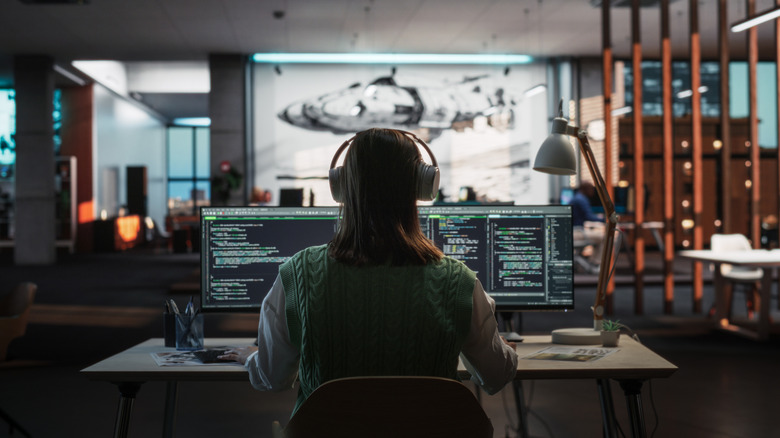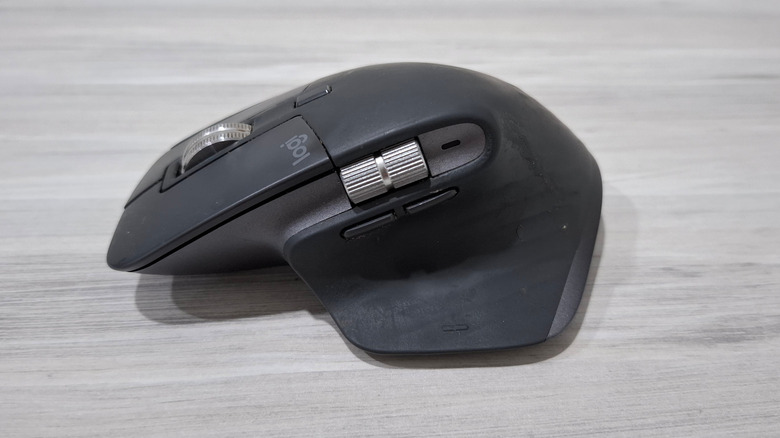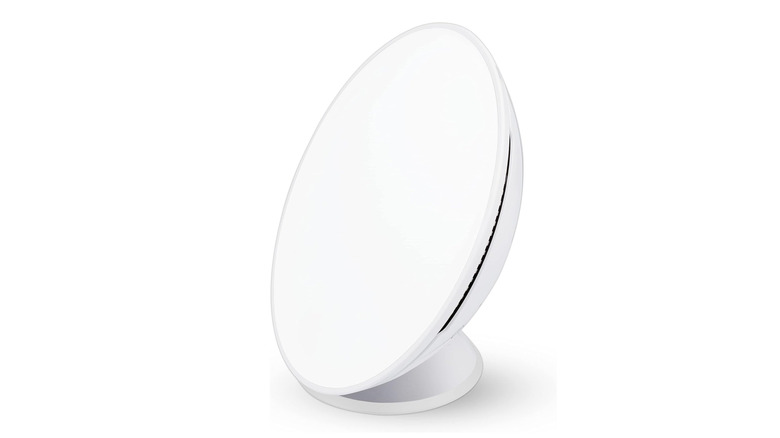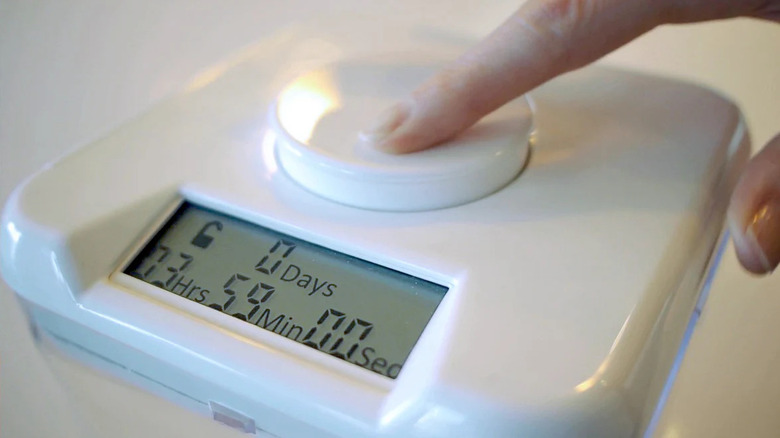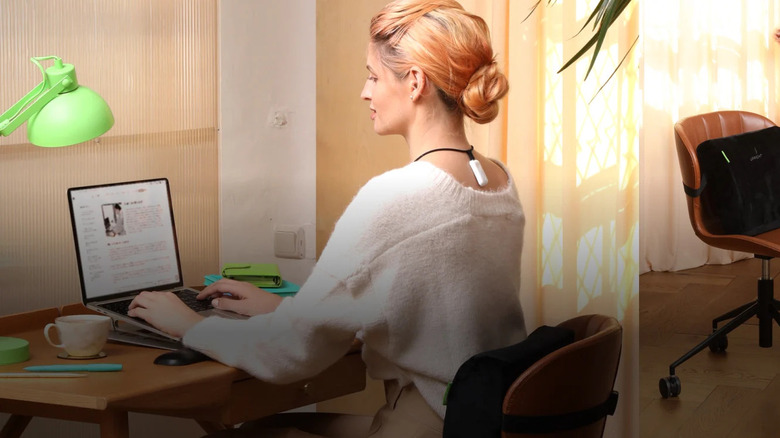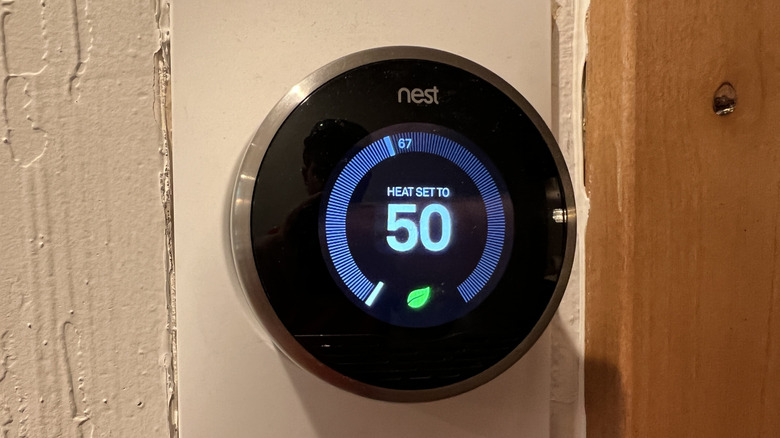12 Highly Recommended Must-Have Gadgets For Focus & Productivity
We may receive a commission on purchases made from links.
Kinda-not-really-fun fact: your smartphone is distracting you even when you're not using it. That's right, the mere presence of a smartphone — not touching it, not seeing notifications, not even looking in the device's general direction — in the same room as you reduces your cognitive capacity, according to a study by Journal of the Association for Consumer Research. Addictive smartphones have corrupted us so badly that our focus is impaired by their proximity alone, almost as if they exhibit some alien power like the monolith in "2001: A Space Odyssey."
It's not enough to download Cold Turkey Blocker, install distraction-minimizing apps on your iPhone, and steel your will with a self-help book. You may need something a bit more tangible. Can curing your relentless inability to focus be as simple as making a few additions to your workspace? Here are some focus- and productivity-oriented devices that may help you stay on target.
Noise-canceling headphones
If you've never used active-noise-canceling headphones, you have been missing out. Noise-canceling tech these days is great and affordable, and can erase a great deal of the sound in your work environment. Bustling co-workers, clacking keyboards and mumbled conversations all but disappear — especially when you play music — making you feel like you're in your own noise-proofed room. Several studies support noise-canceling headphones as a means to improve focus and productivity, particularly for people with attention-deficit disorders. Whatever the case, noise canceling will likely help if you struggle to focus in even a semi-noisy environment,
Noise-canceling earbuds pack top-notch noise cancellation in a tiny package you can bring to work or the coffee shop. Android and Windows users should check out Sony's excellent WF-1000XM5 or the Bose QuietComfort Ultra. Otherwise, try the budget Anker Space A40. Apple users will love the Apple AirPods Pro 2 or the more affordable AirPods 4 (make sure to grab the noise-canceling version).
Over-ear headphones are preferable, though, since they offer longer battery life, better sound, and better noise cancellation. Sony's WH-1000XM5 is generally viewed as the best pair of noise-canceling cans, but the WH-1000XM4 (pictured above) is a close second even for an older model. For a decent budget pair, try the 1More SonoFlow. The law of diminishing returns applies here; a budget pair of noise-canceling headphones will do 90% of the job, with premium options like Sony and Bose only recommended if you want the best noise cancellation possible.
An ergonomic keyboard
Repetitive strain injury is an ever-increasing concern given that we spend hours upon hours bent over computers, typing and clicking. Those repetitive motions aren't just sometimes soul-crushing, they can cause a disabling physical condition. And even if they don't, you may still suffer pain and discomfort that reduce your output and capacity to focus. Businesses, too, can suffer, losing over $64,000 if a single employee has carpal tunnel, according to Logitech. Logitech certainly isn't unbiased, given that its business centers around keyboards and mice, but it does have a point. A comfortable keyboard that minimizes pain will help you to work faster, longer, and undistracted by an injury.
The Logitech Wave Keys is touted as one of the best Bluetooth ergonomic keyboards in the industry. It looks weird and it'll take some getting used to, but your fingers and wrists will certainly thank you for the investment. If your ergonomic keyboard doesn't come with a wrist pad, take a look at our list of the best keyboard wrist rests.
Keep in mind, using an ergonomic keyboard without proper posture is like driving a car with great gas mileage on flat tires. Typing.com recommends keeping your arms at a 90-degree angle, avoiding arching your wrists, keeping your back straight, and not tilting your head forward to follow the text — among other things. In truth, an ergonomic keyboard is only the beginning of a full desk makeover, but it's a beginning nonetheless.
An ergonomic mouse
The next step in your desktop makeover is a decent mouse. If you're one of those people with a $10 Bluetooth mouse you keep because the battery will outlast the heat death of the universe, it's time to get something that's less abusive to your wrist. Logitech estimates that 90% of people can't go back to traditional mice after using the one that's actually designed to reduce wrist strain. Studies or not, it seems pretty straightforward: your mouse involves a lot of repetitive movement and places your delicate wrist carpal-tunnel-down on the desk, which seems like the perfect recipe for strain and injuries.
A decent Bluetooth ergonomic mouse won't be cheap. The top-of-the-line Logitech MX Master 3S runs you about $100, but we'd argue that's better than a hospital bill for several thousand. Still, there are good options in a budget range. A full-sized Amazon Basics costs about $26, and that'll do your wrist wonders compared to the typical mice people use.
If you're particularly concerned about carpal tunnel (or wrist strain and pain in general), try a trackball like the Kensington Orbit. The Logitech MX Vertical is another alternative. Though it looks very strange (and will require retraining the way you use a mouse), the positioning is far better for your wrist. Don't forget a wrist pad, too.
An ergonomic chair
Speaking from personal experience, nothing quite upgrades the office (particularly at home) like a decent office chair — and despite not making chairs, Logitech agrees. It's tempting to spend as little as possible, grabbing whichever cheapo brand has the most five-star reviews, but investing in a decent office chair is a lot like investing in a decent mattress; your body will thank you dearly. Just know this is a market with a lot of knockoffs, so research is key.
It's common for brands to copy each other here, such as this ubiquitous design appearing in the Autonomous Ergochair Curve, among others. Prioritize chairs that provide lumbar support, like the Sihoo Doro S100. If it comes down to choosing between comfy cushions and lumbar support, choose the support. You can always upgrade the cushions after the fact.
I use the Sihoo M57. It's built with excellent quality and can comfortably support someone of any height, with strong, breathable mesh cushions and excellent adjustable armrests — key to getting the ergonomics lined up perfectly for your desk. If you have the budget, then grab some strap-on cushioned armrests like those from Western Comfort. And ComfiLife offers an excellent gel seat cushion with a coccyx cutout that makes sitting for long periods way more comfortable than it has any right to be. But once you do get uncomfortable, a standing desk will help.
Standing desks
Standing desks have been all the rage in recent years, rising to general popularity during the pandemic. The idea is that whenever sitting begins to get uncomfortable, you raise the desk to standing height, then work that way until standing gets uncomfortable — and vice versa. Being sedentary is perhaps the biggest health issue of the modern era, particularly with so many people working remotely. You may have heard the phrase "sitting is the new smoking," and the research agrees. It also agrees that a standing desk is the antidote.
I own a standing desk, and have nothing but praise for it. You have two options, depending on your budget and current setup. You can convert an existing desk into a standing desk with a riser converter, like the SHW 36-Inch Riser Converter Workstation, or you can purchase a standing desk complete with an electric motor and programmable height buttons. I own one similar to the SHW 55-Inch Electric Adjustable Standing Desk.
If you do get an electric standing desk, keep two things in mind. One, the motor is fairly weak, so the desk will struggle to rise if it holds much more than a few monitors and a small pair of speakers; the computer tower must remain on the ground, and bookshelf speakers on stands. Two, you'll need longer cables for anything sitting on the desk connected to anything on the ground — like that computer tower. Maybe get an Ikea pegboard to free up your desk real estate.
Circadian lamps
While our computer screens are dousing us with blue light and making it harder to sleep at night, the artificial lighting in our workplaces and homes isn't giving us that boost — or at least not enough of one. A study out of Kyoto University inJapan found that stronger interior illumination — that is, illumination that more closely resembled that of the sun — made people perform better than they did under efficient low-energy lighting. In short, a dim interior workspace may hinder you from reaching maximum productivity. Aside from upgrading your interior lighting (which might be difficult at the office), one way to do this is with a therapy lamp.
Therapy lamps blast you with bright LED light your body is meant to mistake for the sun. There exist many desk-mounted versions, including the Circadian Optics Light Therapy Lamp. They hit you with "full-spectrum" lighting that should, at least in theory, make you feel more awake and alert during work hours — and equally as important, sleep well at night. If you're feeling sluggish or brain-fogged, you switch this bad boy on for up to an hour. Don't make this a replacement for regular walks outside but a circadian lamp is excellent for offices lacking windows or places that don't get much sun.
A phone lockbox
Smartphones, as we've established, are source of infinite temptation, and no one has come up with a way to stop them from being a temptation when powered on and within reach. Unless you own a OnePlus smartphone with a Zen Space mode, the only thing you can really do is leave it in another room. The problem isn't you; the sad truth is that smartphones are engineered to hijack human attention, and we simply lack the evolutionary hardware to ignore them. So rather than feeling bad about yourself, buy a phone lockbox.
There are dozens of options online, like the Kitchen Safe Time Lock Safe. Plop your phone inside, set the timer, and boom, productivity is assured until the countdown runs out. Speaking from experience, this is really the only effective way to eliminate a distracting phone. Once you can't reflexively check for notifications, you'll be amazed how much more you get done. Don't just take my word for it; others such as Outside have tried the lockbox method and watched themselves increase their productivity.
That said, this only solves the distraction problem that is your phone. It does nothing for your computer. Definitely shore up those desktop distractions with Chrome productivity-boosting extensions like the Cold Turkey Blocker.
A smart air purifier
You'd be amazed what unseen aspects of your workspace are affecting your productivity. Poor air quality is one great example. Bad ventilation makes students perform worse in school, so imagine what that stuffy office is doing to you. Crack a window from time to time, and if you want to go a step further, buy an air purifier for your office space.
These tend to be a bit on the expensive side, like this Blueair purifier at $169.99. It's impossible to say how well it will do pending more comprehensive scientific studies on consumer air filters in small spaces, especially considering the many confounding variables of your specific working space. However, if the studies on air quality and cognition mean anything, it's doing something.
If air quality is of a particular concern to you, consider getting a purifier with the horsepower and capacity to tackle more than just your immediate workspace. Most these days can be turned on and left on, purifying automatically whenever they detect a lot of particulates in the air. Make sure the air purifier you buy has a HEPA filter to really get rid of any crud you might be breathing in.
A smart water bottle
Hydration is a core part of how well you can think and perform, perhaps more than having a ventilated room. Some sources suggest as many as 75% of U.S. adults are chronically dehydrated. Whether or not that's true, it is true that dehydration impacts cognition. Even mild dehydration hurts everything from your memory to your language skills.
Now imagine how much worse off you are if you fall into that chronic dehydration camp; perhaps you're one of those people who only remember to drink water once they're dying of thirst. Try the Hidrate Spark Pro Smart Water Bottle to keep track of how much you're drinking and remind you when to drink. It's a high-quality vacuum-insulated bottle, so if you've been in the market for a new water bottle, you can kill two birds with one stone.
Admittedly, buying a smart water bottle is a 50-dollar solution to a zero-dollar problem. Another solution is to try an Apple Watch health app like Water Tracker Waterllama. The app is free, and it gives you friendly reminders to drink water based on physical attributes such as height and weight. Your required intake will differ from the next person's, but Harvard Medical School recommends four to six cups of water a day for most people.
A stream deck
Do you find yourself doing repetitive digital tasks again and again throughout the day, ones that require onerous keyboard shortcuts or macros? An item that has been growing massively in popularity over the past couple of years is the Elgato Stream Deck — not to be confused with the Steam Deck OLED portable gaming PC. Basically, it's a miniature "keyboard" with 15 colorful LCD keys that can be programmed to do specific things. The buttons react to touch, and they come with plug-ins to control various apps and devices from one place. You keep the Stream Deck on your desk in front of your keyboard for whenever you need it to activate your most frequent hotkey actions.
Stream Deck caters to streamers (hence the name) but there's nothing stopping anyone else from using it. There don't yet appear to be any studies on the effectiveness of the Stream Deck on your productivity, but there is a lot of anecdotal evidence that it works. Use it to do things that require a bit more than a keyboard shortcut; for example, opening a new email window regardless of which app you currently are in. It's certainly not for everyone; you may not find it all that useful if most of what you do only requires simple keyboard shortcuts.
Smart posture corrector
Most people are aware that bad posture at the desk has a host of negative effects on your health, especially your back. But there appears to be at least some evidence that it affects your productivity, too. Seems pretty logical; being hunched over causes neck and back pain, which at the very least distracts from your work. Problem is, slouching is a hard habit to kick. Reminding yourself constantly throughout the day to pull your shoulders back and sit up straight is probably only going to have you correcting yourself at random, whenever it comes to mind. But there are some potential "hardware" solutions to this problem.
The first is the Upright GO S Lite Posture Corrector Trainer. It's a small box you place on your upper back between your shoulder blades that vibrates anytime you start slouching. In theory, a few days or weeks of training will help you to sit upright on autopilot. If you have really bad posture (and you really want to fix it) you might consider a posture-correction harness like this one from BackEmbrace, or this Delimira posture corrector bra. A more affordable (and slightly less invasive) solution might be to download an app like Posture Reminder.
A smart thermostat
Small environmental factors can have a disproportionate impact on your productivity, and one final element you probably haven't considered is the temperature. Working in a room that's too hot or too cold isn't just uncomfortable, it affects how much you get done. A study from Berkeley Lab found that there are ideal, measurable temperature zones where work performance is at its best. About 70 to 72 degrees (21 to 22 degrees Celsius) is preferable for most people, but climbing just a few more degrees to 73 or 75 (23 or 24 Celsius) causes performance to drop off — and once you reach 86 degrees (30 Celsius), there are productivity losses up to 8.9%.
If you have an old thermostat, consider upgrading to a smart one. A Google Nest Thermostat lets you control your home temperature from your phone, including when you aren't at home. Not only does it help save energy by turning the temperature down when you're gone, but it lets you set a schedule. So if you work at home, program it to sit at that perfect 72-degree sweet spot — or whichever temperature you feel is most comfortable — to maximize productivity for the day.
